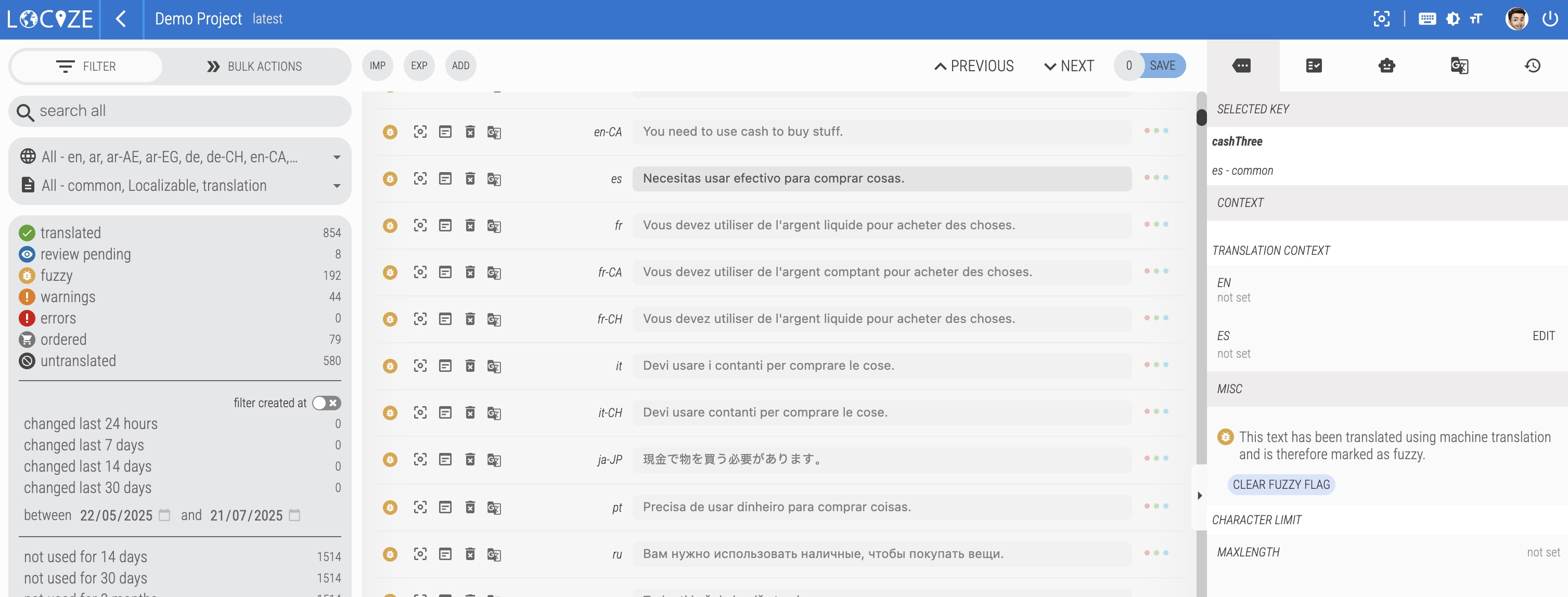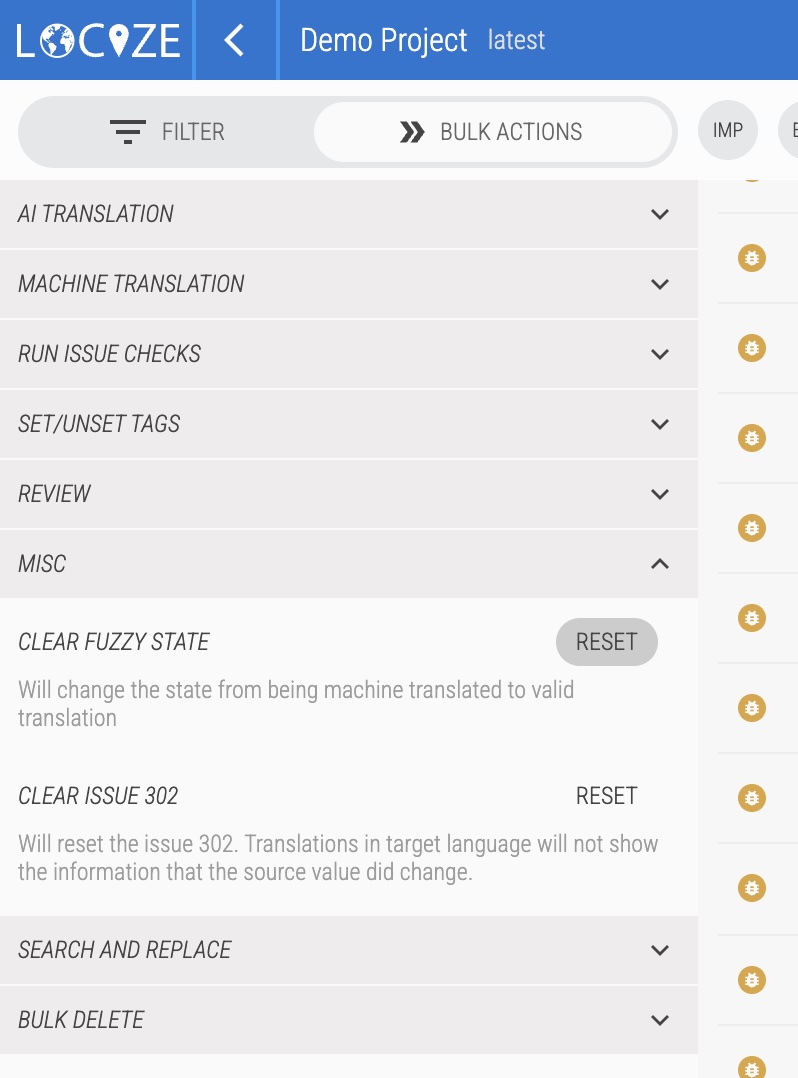On this page

Keeping track of new translations
You have to define as a team how your localization process should look like. Define a workflow that suits you best.
Some general stuff
Untranslated
Generally, untranslated segments can be seen with the “untranslated” filter:

Best is, to filter for the appropriate language and then click untranslated in the filter.
The filter is available in Global view and in Focus view.
Last changed
Another interesting filter is the last changed filter:

Here you can filter for segments changed in the last couple of days.
Best is, to filter for the reference language and then click changed last x days in the filter. This way you'll see which changes has been done in that period.
The filter is available in Global view and in Focus view.
The filter groups are combined with an and conditions. For example having the translated filter in combination with the changed last x days filter.
More comfortable with warning issue 302
Even better is to filter for warnings (mainly because of issue 302), this issue says that the reference language has been changed, but the target language has not:

Additional stuff
Fuzzy translations
Translations created with the help of machine translation or generative AI services are marked with the fuzzy icon.
Filter by those fuzzy translations is an easy starting point to review those generated translations.

The fuzzy icon is cleared as soon as a translation is edited by a human or if it's manually cleared.
It can be cleared in the global view on the right side:

Or in the focus view:

Or via bulk actions:

Tags
Using the tags feature can be a good way to design your custom translation workflow.
A minimalistic example:
Having a tag with the name TO BE REVIEWED every segment that should be reviewed can be tagged. i.e. when creating new segments, you can tag the segments in the target languages with the TO BE REVIEWED tag.This way a translator for a specific language can filter for its language and the TO BE REVIEWED tag. As soon as the segment is "translated or reviewed" the tag can be removed from that segment:

Another minimalistic example:
Having a tag with the name REVIEWED every segment that has been reviewed receives that tag.This way a translator for a specific language can filter for its language and the inverse REVIEWED tag:

Make sure you toggle the has tag checkbox, first:
Review workflow
For more complicated “verifications” there is also the option of review workflows.

Branched projects
There is also the option of a completely separate localization process.If new translations need to be “done”, a kind of internal “order” can be made with the help of the branched projects.

Use an order service
You can use one of the integrated services to order the translations from a third party. Just go to your order settings and enable the service you like to use by providing the needed data.

Fancy stuff
Slack notifications
You can use the slack integration to inform the translators.
Each time a namespace is not completely translated anymore a slack notification is generated.

Webhook
You can use the webhook integration to POST to some API.
Each time a namespace is not completely translated anymore a webhook event is sent to the configured API.


